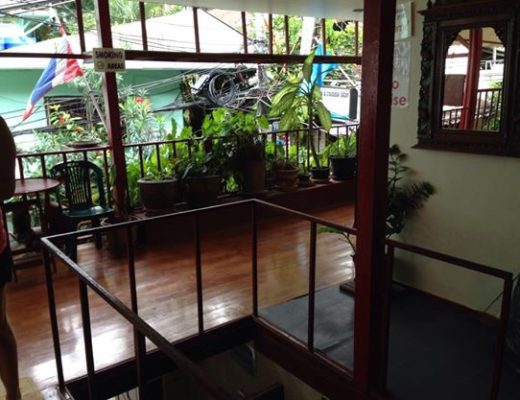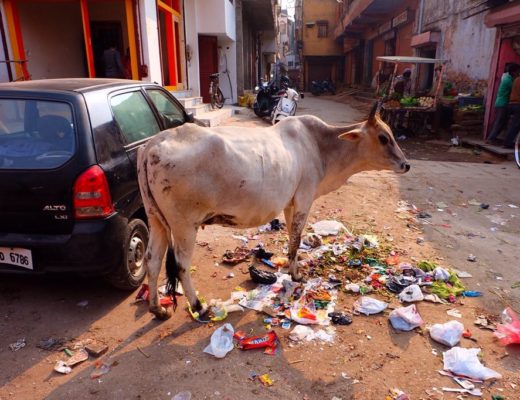It tops many peoples bucket lists, and when most people think of visiting countries like Thailand, the first thing they think of is riding an elephant. Everyone wants a photo on top of these gentle giants, and I was one of those people until I recently was about to jet off to Southeast Asia this past December. I didn’t realize that riding elephants was bad until my sister, who is an animal biologist, told me so. After doing some more research, and deciding to opt out of elephant riding and opt into a visit to the Elephant Nature Park instead, my bucket list item was changed.
Most people wonder if riding elephants is really that bad. I mean, you see everyone else doing it, so surely if it was bad it would be against the law right? Wrong. The issue is the lack of awareness and the lack of laws in Southeast Asia surrounding protecting elephants. It’s shocking how many elephant camps in Asia advertise and claim to treat the elephants well, but the moment you visit them you realize that this isn’t necessarily the case. I completely get how tourists fall for this, in most countries, claiming to be an organization that treats animals humanely and not following through with that claim is usually illegal. Here are some reasons why you should opt out of riding an elephant on your next adventure, and scrap it from your bucket list.

Why shouldn’t I do it?
Extinction:
Asian elephants are endangered animals. There are less than 40,000 left in the entire world. In Thailand alone there were over 100,000 Asian elephants at the beginning of the last century, and now there are only about 4,000. This terrifying statistic alone should be a reason why we need to treat these animals like royalty, as oppose to using them selfishly all for one photo to hang on your wall. One out of every three Asian elephants live in captivity and we can’t necessarily change this. These elephants would not be able to survive in the wild now on their own, and the depleting forests in many of their home countries doesn’t help the equation. There is something we can do, give them a humane and peaceful place for them to live as freely and wildly as possible, without having to work long hours and be essentially slaves to tourists.
Traumatizing Training:
Elephants are wild animals, and just like any wild animal, they need to be tamed in order to act the way they do around humans. You don’t just pluck an elephant from the wild and start riding it. When most people think of training, they think of how you train your dog, a cat or even a horse, but the way that they train elephants is nothing like that. The process to train an elephant is horrifying, abusive and something that no living thing on this planet should have to endure for the pleasure of humans. Most elephants are ripped away from their Mother when they are way too young, and forced into a process called “the crush” where they are locked in a tiny cage and abused until they stop resisting and start obeying humans. Do you still need more reasons not to ride them?
Permanent Damage to Their Backs:
On top of the terrible training, an elephants spine is not made to support the weight of people, and despite the fact that these creatures are massive, heavy and strong, carrying people on their backs all day can lead to permanent spinal damage. The chairs that you often see tourists sitting in within all the photos, actually hurt an elephants back more than anything else. It rubs on their backs, causes blisters and sores, and to top it off, usually these camps don’t give the elephant time to heal before they pile on more tourists. In fact, when I visited the Elephant Nature Park, several of the elephants that were rescued from other tourism camps had permanently broken hips and damaged backs, causing them to walk funny. All due to tourists riding them and being overworked. The best known way to ride an elephant is actually on their necks, as it’s much stronger than their backs, and doesn’t require a giant, heavy chair to be placed on their spine.

Note the elephant closest to the camera and how her back/hips are permanently injured from people riding her.
Abuse Never Stops:
Although these elephants appear to be taken well taken care of, in many of these camps the abuse doesn’t stop after the initial “crushing” they endure as babies. These elephants are usually chained up when not in use on short chains that don’t allow them to naturally graze. Often times they are chained where there isn’t even any grass or foliage for them, and most of the elephant trainers (mahouts) carry around bullhooks, which is a frightening torture device. Even if you don’t see them physically use it when tourists are around, take a look at the elephants themselves. Do you see parts of their ears missing, weird scars and markings on their skin that doesn’t look natural? Where do you think those come from?
The worst part of all of this, elephants are said to be one of the most emotional creatures. They feel just like humans do and they remember. They shed tears and they even grieve the loss of a loved one, just like us! How devastating is that to think about?
How do I know if the camp I visit is treating the elephants right?
You probably think that if the camp claims they don’t abuse the animal, they must be telling the truth. In reality there aren’t many laws around protecting animals in countries like Thailand, and simply reading a sign that says, “eco-tourism” isn’t always what you think it means.
Do your research. Don’t just wait till you show up in Thailand, pick up the first pamphlet you see that advertises a safe and humane elephant trek or camp, and sign-up. Read reviews, and most importantly read about each camp there is out there. People aren’t shy with voicing their opinion on how they see elephants being treated. Taking time to research, and being willing to pay a little bit more for an ethical experience is key.
Once you arrive at the camp it’s pretty easy to tell if the elephants are being treated well. Hopefully you’ll realize the elephants are being treated humanely before you show up there, but just in case, here are some things you can look out for:
- When an elephant is stressed you’ll notice it rocking back and forth, side to side continually. This is an sign of deep stress, boredom and lack of natural environmental surroundings for them to live in.
- They are old and frail, yet still being forced to work for hours. Elephants become old ladies and men just like humans do and often are forced to work well beyond their years. Watch out for camps overworking these older elephants in particular.
- Look at how they are treated. Are they often being forced to do things, hit, yelled at, etc.? You’ll be able to tell pretty quickly if the mahouts treat their elephants with care by just watching how they interact with their animals.
- Take a closer look at the elephants body. Just like humans, you’ll be able to tell if they have scars, wounds, or other markings that aren’t natural and look like they could have been caused by inhumane treatment.

How can you help?
1) Visit humane elephant camps and sanctuaries. Aside from where I went, The Elephant Nature Park, here are some additional suggestions from Lonely Planet.
2) Stand up for an animal that can’t speak for themselves. Follow and support those trying to make a difference like:
- World Wildlife Foundation
- PETA
- Lek @ The Elephant Nature Park
- The Associates of The World Elephant Day
3) Don’t buy into it! If you go with the motto, “everyone else is doing it, how am I supposed to make a difference,” we won’t ever see anything change. Even if you pay to go to one of these camps and opt out of riding the elephant, you are still buying into the industry.
Thanks to these great sources that helped me write this article:
[yo-widget href=”https://www.yonderbound.com/stories/lauren-marinigh/a-life-changing-experience-at-the-elephant-nature-park/2559/activities/ACT1236″]





6 Comments
Alexandria
May 5, 2015 at 10:48 pmI wrote an almost identical article on this a few months back. It was a bucket list article but it was about how I wanted to visit a nature preserve instead and how to better help animals. I got a lot of great feed back but unfortunately all of it was lost when i moved over from blogger.
Lauren
May 6, 2015 at 1:45 pmAwe that sucks that you lost all the great feedback 🙁 Thanks for commenting!
Lisa
May 7, 2015 at 10:16 amGreat article! Often when we travel we want to do things that bring us closer to some of the animals we admire but forget the long term affects that these unique interactions have on the species.
It really is heartbreaking the way some animals are treated around the world to cater to our needs..
Paul Marshman
May 24, 2015 at 2:08 pmGood post, Lauren. It’s true, a lot of the animal-based tourist attractions in many countries are actually forms of animal abuse. I’m even skeptical about places that offer horse riding treks: you can often see the horses are leading a pretty miserable life. One point, though: I always assumed most of the elephants used for work and tourism were bred in captivity. Is there still a lot of live capturing going on?
Lauren
May 24, 2015 at 4:09 pmI believe a lot of them are bred in captivity now, but it’s hard to really know for sure! Even though they may not be captured from the wild though, that doesn’t stop them from selling them off from their Mother’s when they are too young!
Lauren | Justin Plus Lauren
May 27, 2015 at 4:21 pmI’m so glad that you wrote about this…bloggers can help spread awareness like this, so hopefully it makes people decide to choose other activities! I’d love to see this practice fall by the wayside, which it would if people didn’t profit from it. The best way – don’t support it! And blog about alternatives 🙂 Thanks, girl!! 🙂